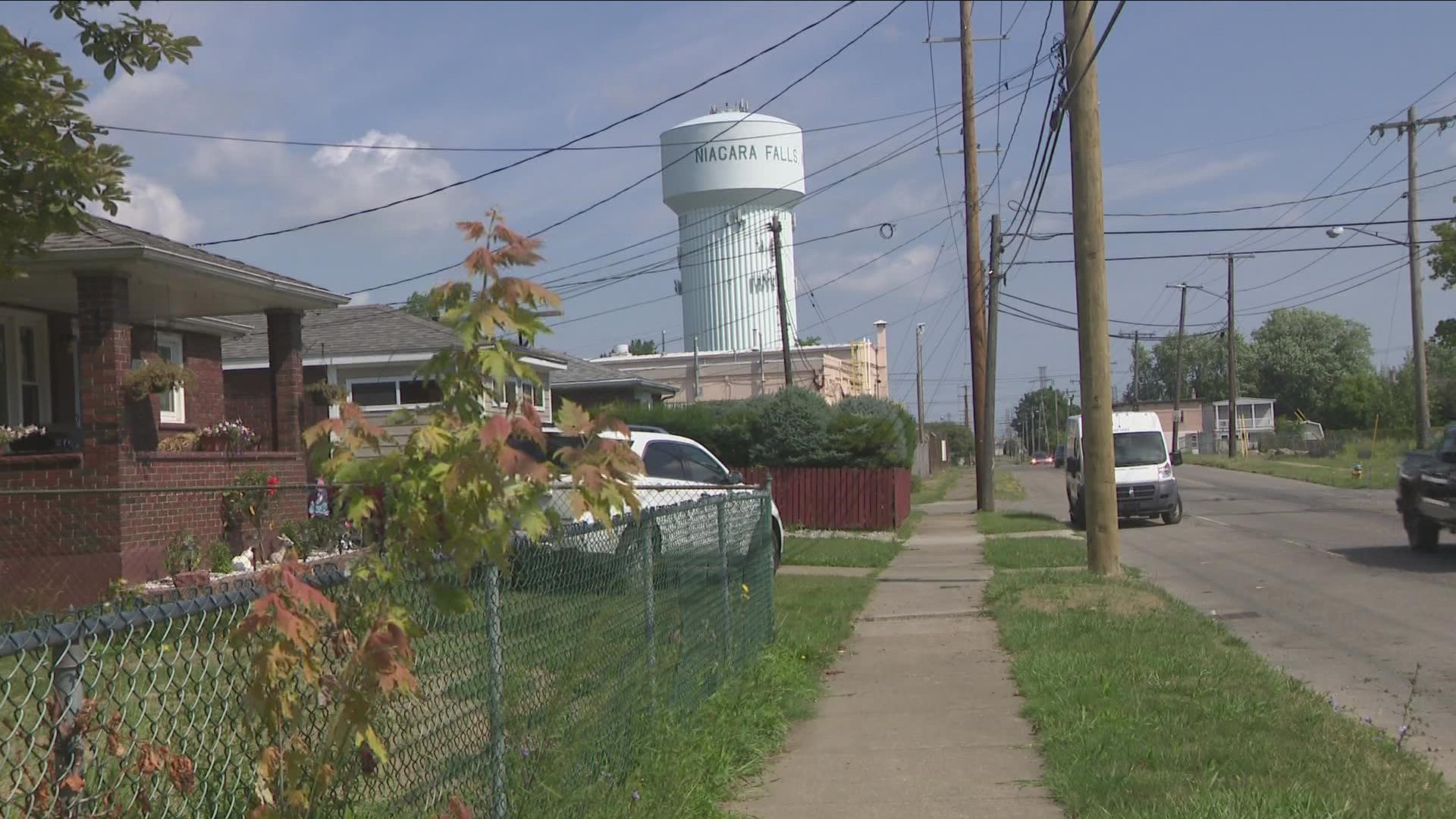NIAGARA FALLS, N.Y. — Residents in portions of the Lasalle Neighborhood of Niagara Falls say they want something done about an infestation of rats which they say is getting out of hand.
"The area is slowly becoming overrun with rats," said 56th Street resident Tracy Gilmore. "We have a group of about 70 residents (so far) who are having terrible issues with these rodents. Myself and my neighbors are unable to enjoy our yards due to the rats running around during the day. I have one neighbor who is so terrified she cannot pull her car into her garage herself- she makes her husband pull it in for her. Many of us have had to have cars repaired due to the rats getting into the engines and eating wires, or worse starting an engine fire."
"They're everywhere!" exclaimed Gilmore's neighbor Kyle Walker. "They're this big," she said while holding her hands a foot apart.
"They'll just stand and look at you," said Ed Mayberry, who said the rats aren't even afraid of lawnmowers.
While Mayberry has taken up shooting them with a BB gun, and Walker has chased them with a broom, both said the city has not done much to address the problem, which they say they are reminded of every morning as they walk the neighborhood and see rats in the streets which were flattened by passing vehicles the night prior.
City Councilman Kenny Tompkins disagrees, however, with those who say the city hasn't taken action.
"We blitzed the area last week," insisted Tompkins. "We had our Zoom Team out there....and what we found was lots of loose trash in the alleys of the neighborhood. Rats are attracted to trash."
Tompkins said unsecured garbage, placed out days before it's scheduled to be picked up, is the likely culprit for the problem.
However, the rats have been chewing through the plastic garbage totes the city distributes to residents, to consume even waste that has been properly secured. And Mayberry reports the rats have even chewed and destroyed the rat traps he's set out.
According to Tompkins, City Administrator Anthony Restaino, and even the residents themselves, there are others contributing to the problem who don't live in the neighborhood but come there in clandestine fashion at night to dump trash and other debris in the alleys.
Restaino told 2 On Your Side the DPW has been scouting the alleys up to three times a week looking for excess debris, and in some cases sending code enforcement officers out who can fine property owners. He says if city crews do pick up trash from private property, then the property owner can expect a fee to add to their tax bill.
In addition, he says the city has worked with National Grid to have the utility company more frequently mow several vacant lots it owns in the neighborhood in order to give the rats fewer places to hide, and has been issuing new trash totes to those who request a replacement for the ones damaged by rats.
However, Restaino said residents must also be prepared to assist the city by reporting neighbors who leave trash outside in bags for days before it's scheduled to be picked up.
Niagara County Health Director Dan Stapleton told WGRZ-TV that his department has been in regular contact with the city to offer advice, but that the health department does not generally intervene unless and until it has evidence or suspicion that the presence of rats in a location is leading to the spread of disease.
Adjacent to the neighborhood is the Covanta Pant, which brings in the trash by the truck and trainload, to convert to energy.
And while some neighbors ponder the possibility of it attracting the rodents which are now inundating their neighborhood, Thompson says the plant has a very effective rodent control program and Stapleton agrees, saying that his office has found no evidence which could point to the plant as being the primary source of the problem.
Like Tompkins and Restaino, Stapelton thinks the primary factor may indeed be household garbage left outside and unsecured.
Whatever the case, residents hope the problem can be abated soon and especially before colder weather arrives.
"Yes, because then the rats are going to be looking for someplace warm to go and that's going to be inside our homes," Walker said.

